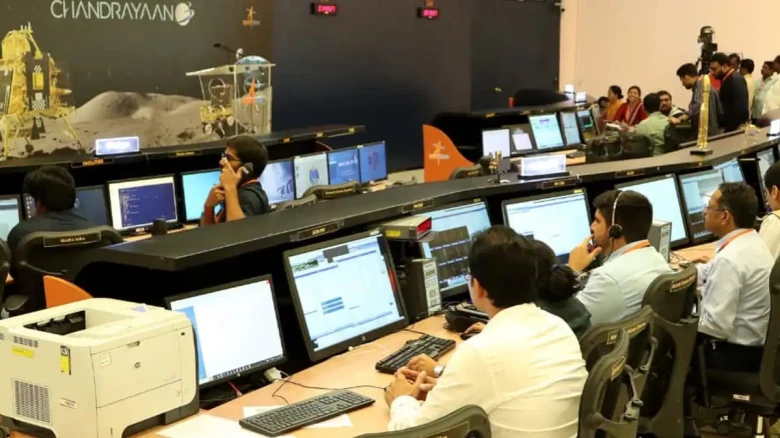The mission operations team will get tracking assistance from space stations operated by the European Space Agency...
Digital Desk: Two international space agencies will assist the Indian Space Research Organisation (ISRO) in tracking the spacecraft as it edges towards history as 1.4 billion Indians watch with bated breath Chandrayaan 3's descent on the Moon's surface.
The mission operations team will get tracking assistance from space stations operated by the European Space Agency (ESA) and the National Aeronautics and Space Administration (NASA) of the United States during the lander's fall.
To put this in context, the Vikram lander, Chandrayaan 3 propulsion module and Chandrayaan 2 orbiter are in the moon's orbit, about 3.84 lakh kilometres from the Earth. The Moon and the earth both revolve around the Sun while rotating on their axes. Antennas on the earth are monitoring the lander's slow descent amidst the motion. The largest dish antenna in India, measuring 32 meters, is tracking Chandrayaan-3 at Byalalu, near Bengaluru.
But at times the lander will travel into a shadow region and become impossible to identify from here. This is where the deep space networks of NASA and ESA come in. However, this is not a free service. Depending on how many antennas it uses and for how long, India is responsible for paying for this.
Therefore, when the lander is out of our antenna's line of sight, NASA or the ESA interacts with it and sends the data to the mission operations team in Bengaluru.
However, it must be made clear that these networks supporting ISRO have no control over what must be done or how it must be informed to the lander. The mission operations team in Bengaluru is in charge of exercising such control, and they serve simply as a communication channel when ISRO is unable to reach the lander through its network.
Around 6 p.m., the Chandrayaan-3 is anticipated to touch down on the moon's surface. Across the nation, large-scale viewing events have been organised, and people hold prayers for the mission's success. After Sunday's Luna-25 spacecraft crash that stopped Russia's moon mission, the suspense is particularly high.

Leave A Comment